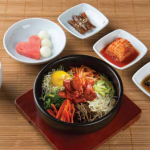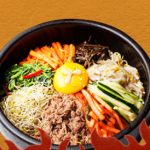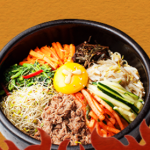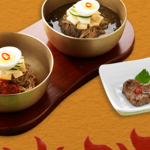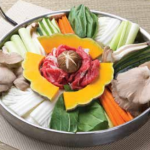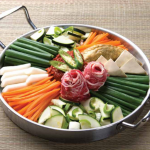Introduction
Are you ready to embark on a culinary journey to the heart of Korea? Korean cuisine has gained immense popularity worldwide, thanks to its unique flavors and vibrant dishes. From spicy and savory to sweet and tangy, Korean food offers a delightful blend of taste sensations. In this article, we will guide you through the art of creating trendy Korean dishes, step by step. Don’t worry if you’re new to Korean cooking; these recipes are designed to be beginner-friendly. So grab your apron and let’s dive into the world of Korean gastronomy!
Body
1. Bibimbap: A Colorful Harmony on Your Plate
Bibimbap, which means “mixed rice” in Korean, is a delightful dish that combines a colorful assortment of vegetables, beef, and a fried egg. To make this visually stunning and delicious meal, follow these simple steps:
- Ingredients:
- Cooked white rice
- Assorted bell peppers, julienned
- Carrots, julienned
- Spinach, blanched and seasoned with soy sauce
- Bean sprouts, blanched and seasoned with sesame oil
- Cooked ground beef, seasoned with soy sauce and sesame oil
- Fried egg
-
Gochujang (Korean chili paste)
-
Instructions:
- Arrange the cooked rice in a large bowl.
- Place the colorful vegetables, cooked beef, and fried egg on top of the rice.
- Serve with a dollop of gochujang on the side for an extra kick.
- Mix everything together before eating, ensuring the flavors meld together perfectly.
2. Kimchi: The Infamous Fermented Cabbage
Kimchi is a staple in Korean cuisine, and no Korean meal is complete without it. Making your own kimchi might seem intimidating, but it’s actually quite simple and rewarding. Here’s how to create this tangy, probiotic-rich side dish:
- Ingredients:
- Napa cabbage
- Korean radish (mu)
- Garlic, minced
- Ginger, minced
- Korean red pepper flakes (gochugaru)
- Fish sauce (optional for a non-vegetarian version)
-
Salt
-
Instructions:
- Cut the cabbage into quarters and soak it in salt water for a few hours to soften.
- Rinse the cabbage thoroughly and drain the excess water.
- In a large bowl, mix garlic, ginger, red pepper flakes, and fish sauce (if desired) to create a paste.
- Rub the paste onto each cabbage leaf, making sure to coat them well.
- Place the cabbage in a jar, tightly packed, and let it ferment at room temperature for 2-3 days.
- Once fermented, store the kimchi in the refrigerator for several weeks or enjoy it immediately.
3. Korean Fried Chicken: Crispy and Irresistible
Move over, traditional fried chicken! Korean fried chicken takes this classic dish to a whole new level with its crispy exterior and addictive flavor. Get ready to experience a taste sensation like no other with this sensational recipe:
- Ingredients:
- Chicken wings or drumettes
- Soy sauce
- Garlic powder
- Ginger powder
- Salt
- Pepper
- Cornstarch
- Baking powder
- Vegetable oil for frying
- Korean chili paste (gochujang)
-
Honey
-
Instructions:
- In a large bowl, mix soy sauce, garlic powder, ginger powder, salt, and pepper to create a marinade.
- Add the chicken pieces and thoroughly coat them with the marinade. Marinate for at least 30 minutes (or longer for deeper flavor).
- In another bowl, combine cornstarch and baking powder.
- Roll the marinated chicken pieces in the cornstarch mixture, ensuring they are evenly coated.
- Heat vegetable oil in a deep pan and fry the chicken until golden brown and crispy.
- In a separate bowl, mix gochujang and honey to create a sweet and spicy glaze.
- Toss the fried chicken in the glaze until each piece is well-coated.
- Serve the Korean fried chicken hot and enjoy the irresistible crispy texture with every bite.
Conclusion
Congratulations! You have now explored the world of Korean cuisine and experienced the joy of creating trendy, mouthwatering dishes. Whether it’s the colorful harmony of bibimbap, the tanginess of homemade kimchi, or the addictive crunch of Korean fried chicken, Korean recipes are sure to delight your taste buds and leave you craving more. So don’t hesitate to get creative in the kitchen and savor the flavors of Korea.
FAQ (Frequently Asked Questions)
- What are some vegetarian alternatives for the Korean fried chicken recipe?
-
Instead of chicken, you can use tofu or cauliflower florets as a vegetarian alternative. Adjust cooking times accordingly.
-
Can I substitute gochujang in the bibimbap recipe?
-
If you don’t have access to gochujang, you can use sriracha sauce as a substitute, although the flavor profile will be slightly different.
-
How long does homemade kimchi last?
-
Properly stored homemade kimchi can last for several weeks in the refrigerator.
-
Is kimchi suitable for those with lactose intolerance?
-
Yes, kimchi is dairy-free and does not contain lactose.
-
Are there any other essential Korean side dishes?
- Yes, there are many! Some popular options include japchae (stir-fried noodles), tteokbokki (spicy rice cakes), and haemul pajeon (seafood pancake).
Now that you have an arsenal of trendy Korean recipes, go ahead and impress your friends and family with your newfound culinary skills! Happy cooking!

